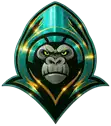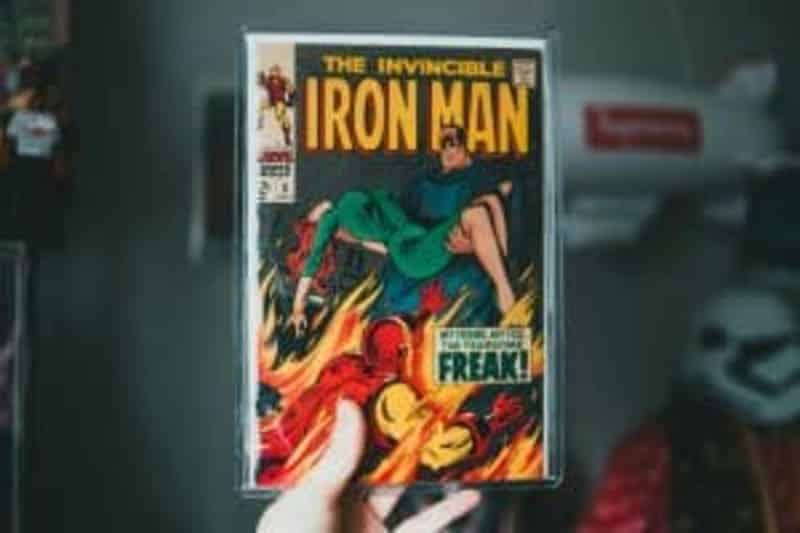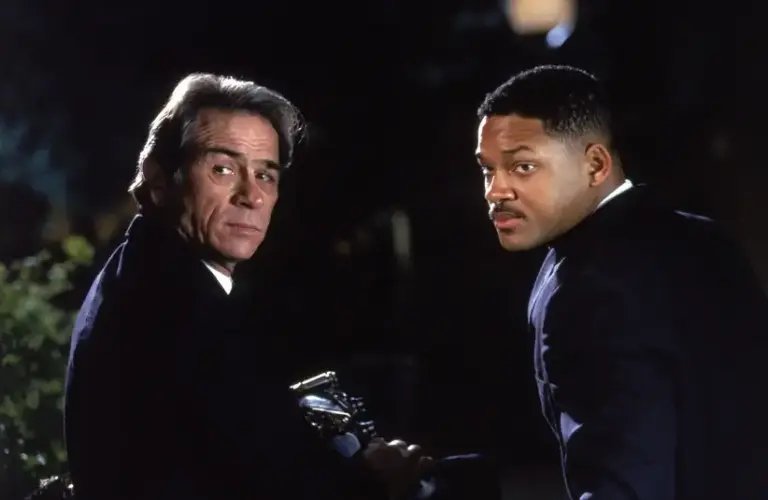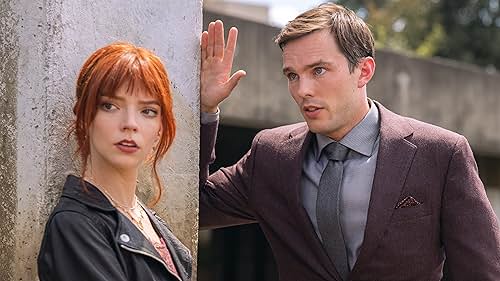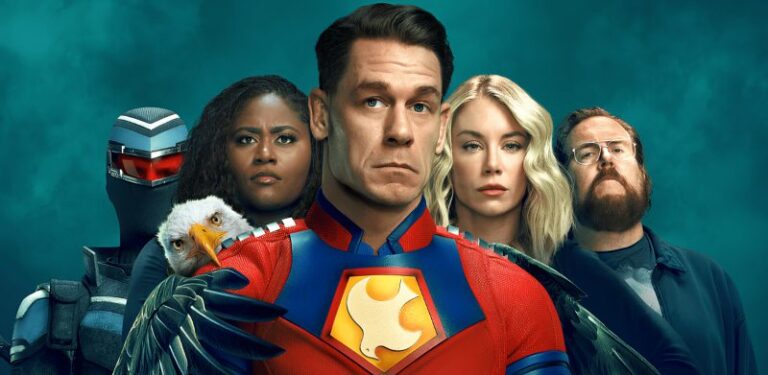Marvel: A Jaw-Dropping History | 6/14/24
Iron Man, Spiderman, Captain America… It’s impossible not to know any of these names nowadays. They all fall under the umbrella of Marvel, once a comic book publisher, turned into a mainstream multimedia giant. However, it’s not always been fun and sunshine. Marvel’s core is to originate great, captivating stories for their audience, but they have a great, fascinating story of their own.
To this date, there are 61 Marvel movies, including the Marvel Cinematic Universe (MCU) and the non-MCU ones. But how did a comic book publisher become a movie juggernaut? Here’s the marvelous story… Sorry for the awful pun.
The Origins
It was 1939 when Martin Goodman created Marvel, originally named Timely Comics. The first issue ever published introduced the Human Torch. In 1939, Stanley Lieber was hired as General Office Assistant. He would write under the pseudonym ‘Stan Lee’, and that gave birth to a plethora of iconic characters. It was in 1941, in the midst of World War II, that Marvel launched a patriotic character, Captain America. This is important, as it was three years later that Marvel had their first encounter with the cinema world, as, in 1944, the world saw Captain America in theaters.
Plenty of stuff happened later. After World War II, the superhero market wasn’t popular. They shifted into Western genres or biblical and mythological stories. They also rebranded as Atlas Comics in 1947.
The Marvel vs. DC Comics War Begins
In 1957, Atlas Comics saw their distributor lose a lawsuit against the Justice Department, so they shut down, leaving Stan Lee and the company high and dry. This was a big issue, which made them turn to Independent News. The only -and massive- problem was that Independent News was the distributor of DC Comics, which was flourishing at the moment. This meant Atlas was limited and seen as a tier-below client, which almost caused them to shut down.
Atlas then rebranded as Marvel Comics in 1961. DC Comics has been resurrecting the superhero genre successfully. Naturally, Marvel followed suit. However, Stan Lee went from child comic books to a more grown-up audience. He focused on telling relatable backstories and forming bonds between the readers and the heroes.
It all started with the Fantastic Four, and shortly after, the Amazing Spiderman. From there, Marvel found quite a period of success by introducing flawed superheroes, as opposed to athletic, perfect-looking figures (like Superman). They also attacked political issues and ideologies, such as communism, and made their heroes go out of the US borders on occasion.
This was Marvel’s way of getting back on track. What followed was the creation of heroes like the Hulk, Ant-Man, Iron Man, and lots of other now-popular characters. But Marvel also created iconic antagonists such as the Green Goblin, Dr. Octopus, Loki, Magneto, Dr. Doom, and more. Having both sides of their projects being interesting, they were giving DC a run for their money.
Marvel Returns to the Big Screen
After more than 40 years since the release of the first Captain America movie, Marvel saw Howard the Duck debut on the big screen in 1986. The film was produced by George Lucas, the mastermind behind Star Wars. However, the movie bombed heavily.
Three years later, in 1989, Marvel would try again releasing The Punisher. Contrary to Howard the Duck, this was not a PG-rated movie, but a rated R one. It was a more grotesque and raw film with a superstar like Dolph Lundgren as the main character. It earned $30 million at the box office.
Captain America returned to the big screen in 1990, with Matt Salinger portraying Steve Rogers. It was released theatrically elsewhere but, in the USA, where it was direct-to-video. It had awful reviews all around.
Marvel’s First Golden Era in Theaters
In 1997, Marvel was on the brink of bankruptcy. The comic book genre was not getting it done. Toy Biz would merge with Marvel to save them. Together, they formed Marvel Enterprises. This also made Marvel sell some of the rights of their characters to big movie distributors as they needed money to survive.
Long eight years passed until we saw another Marvel character get their time to shine in the movie theaters. In 1998, Wesley Snipes brought Blade to life. Despite getting mixed reviews, Blade was a commercial success both domestically and internationally. It grossed over $130 million worldwide. It has also become a cult movie for all Marvel fans.
The success of Blade followed as two years later, X-Men arrived and with star power like Patrick Stewart and Hugh Jackman, X-Men would become one of the few successful comicbook sagas in the big screen world. X-Men was produced by 20th Century Studios.
However, the biggest jackpot came in 2002, when Toby Maguire was cast as Spiderman. The trilogy directed by Sam Raimi became Marvel’s highest-grossing series. Even nowadays, it’s remembered fondly. They also introduced iconic villain performances such as Willem Dafoe as the Green Goblin, and Alfred Molina as Dr. Octopus. It also gave James Franco worldwide recognition as he played Harry Osborn, the son of the Green Goblin but also Spideman’s best friend.
In 2003, more mainstream names became attached to Marvel’s characters. Ben Affleck and Jennifer Garner starred in Daredevil, which wasn’t a success but didn’t bomb. That same year, X-Men released another movie with Halle Berry joining the franchise and Hulk was given its first chance in the big screen with Eric Bana and Jennifer Connelly starring. Both X-Men and Hulk were in the top 15 highest-grossing movies of 2003.
The Non-MCU Movies Started Bombing
Despite having plenty of other movies with big celebrities such as Nicolas Cage and Eva Mendes (Ghost Rider), Jennifer Garner (Elektra), Chris Evans, Jessica Alba and Ioan Gruffudd (Fantastic 4), and John Travolta (The Punisher), the mid-to-late 2000s were marked by inconsistent and mostly bad critics for Marvel movies.
Marvel wasn’t earning too much from this. By 2005, they planned to produce their own films and distribute them under Paramount Pictures. This was the MCU, however, Marvel knew some of their most iconic figures like Spiderman, X-Men, and Fantastic Four already had licensing deals in place, which made them turn to other heroes.
While the MCU began with Iron Man’s 2008 film starring Robert Downey Jr., other companies still held some rights to Marvel heroes so even if the MCU started, other Marvel movies were made. The Amazing Spiderman starring Andrew Garfield had two movies that weren’t as successful as Raimi’s trilogy (though Garfield’s interpretation has aged like fine wine), and another Fantastic Four movie was made with big names such as Miles Teller and Michael B. Jordan, but this was also a flop in the box office.
Since the start of the MCU, the only non-MCU movies to achieve success were the X-Men movies, which by this point had an already solidified hardcore fanbase, and Deadpool, which was released in 2016 starring Ryan Reynolds to massive acclaim.
The MCU Begins Before Disney’s Arrival
Many believe it was Disney’s $4 billion acquisition of Marvel in 2009 that kickstarted the MCU. However, as mentioned above, this massive project has been planned since 2005. In 2008, however, the MCU was introduced to global audiences. Marvel needed to start with a bang. By not having their top heroes available due to the contractual issues mentioned above, they had to take a gamble.
This all-in move was to produce Iron Man, a billionaire, self-centered character who made fortunes off of selling weapons but had a change of heart after being kidnapped. Having said that, Iron Man was not exactly a well-known character, hence the actor that portrayed him had to be a proven star with massive charisma, right? Wrong… or 50% wrong.
The actor chosen for the role was the much-maligned Robert Downey Jr. He was an acting prodigy in his teens and was poised to become great, but public scandals and drug abuse sent his career spiraling down. In the 2000s, Downey roamed around supporting roles or semi-independent movies with behavior-based contracts. By the time he was cast as Tony Stark/Iron Man, Marvel paid him a mere $500,000. Boy would the gamble pay off, as Downey’s portrayal was so good, that it kick-started the MCU in the best way possible.
Later that year, The Incredible Hulk was released, with Edward Norton playing the role of Bruce Banner. He would later be replaced by Mark Ruffalo.
Disney’s $4 Billion Acquisition
Disney’s acquisition of Marvel was huge since it made the MCU redirect itself. As soon as the contract with Paramount expired, Disney would distribute the MCU films. From The Incredible Hulk in 2008 all the way to 2010, no movies were released, which was a risk since staying on the top-of-mind of the audiences is always key to any series.
Iron Man 2 was released in May 2010, and that was about it for the MCU that year. However, this movie served as the introduction for a mainstay in the MCU, Black Widow, wonderfully played by Scarlett Johansson. In 2011, Thor was released with Chris Hemsworth as the protagonist. The movie was not a big success, but it still introduced key characters such as Loki (Tom Hiddleston), and a post-credit appearance of Hawkeye (Jeremy Renner).
Later in 2011, Captain America: The First Avenger was a massive hit with Chris Evans delivering a top performance that would put him as one of the leaders of the MCU. With these first few films, Disney already had introduced their first six heroes, ones that would later become the Avengers, which debuted in theaters in May 2012. The Avengers grossed over $1.5 billion worldwide and established the MCU as an absolute blockbuster franchise.
MCU Phase Two
After Avengers, the MCU continued to grow. They develop storylines under “phases”. Phase One was to introduce the original first six Avengers. Phase Two was to further the storylines and introduce new characters. Their first movie was Iron Man 3, which would be the last solo film for Downey Jr. (though clearly not his last appearance, as he is Marvel’s cash cow).
Then, another two sequels were released. Thor: The Dark World and Captain America: The Winter Soldier hit the theaters. Even though Thor: The Dark World was a commercial success, it’s regarded as one of the poorest movies in the Infinity Saga (Phase One to Phase Three). As for Captain America: The Winter Soldier, it was a box office and critics’ success as it saw the return of Captain America’s best friend, Bucky Barnes, as The Winter Soldier, a now enemy of Cap.
Following those two movies, Guardians of the Galaxy was released, and this introduced two new features into the MCU. First, it was a galactic setting, not on Earth (or Asgard like the Thor movies). It was across space, which set the foundations for what was about to come.
Also, instead of giving just one new hero, Marvel presented us a group (much like the X-Men or Fantastic Four) in the Guardians of the Galaxy. Memorable characters like Starlord, Drax, Rocket, and Groot were introduced. Also, we got to know a little more about Thanos, Marvel’s big enemy of the Infinity Saga, as his daughters, Nebula and Gamora are also heavily featured. This was more light-hearted humor and made the new characters easily loved by people. This made the movie a hit across the globe.
Following the events in the galaxy, Marvel brought us back to Earth with Avengers: Age of Ultron, where our original six (Iron Man, Captain America, Thor, Black Widow, Hawkeye, and Hulk) save the Earth from Ultron. This movie also introduces Vision as well as Scarlet Witch and Quicksilver.
To end Phase Two, Marvel had yet another casting masterpiece as Paul Rudd portrayed Ant-Man in a light-hearted, really funny movie. Ant-Man felt like a bit out of the water, despite being a success, but the 2015 movie opened up lots of new things the MCU would later exploit, like quantum mechanics.
Phase Three: The Infinity Saga’s Epic End!
Phase Three of the MCU is the longest to date. It featured 11 films spanning from 2016 to 2019. It all started with Captain America: Civil War, one of Marvel’s best films, which saw Ant-Man finally meeting the Avengers and the debut of Spiderman, with Tom Holland playing Peter Parker, as well as Black Panther, with the late Chadwick Boseman. Then, we had the debut of Dr. Strange, a character greatly portrayed by Benedict Cumberbatch. This movie introduced us to the mystic arts and multi dimensions.
Guardians of the Galaxy Vol. 2 was next and then MCU’s Spiderman had its first solo movie with Spiderman: Homecoming. After that, Thor: Ragnarok was released, and it revived what the Thor solo movies were. Usually dark and not well received, this movie shifted to a more comedic style, and it was a home run. It also introduced Valkyrie as a future Avenger.
In 2018, Marvel would start with a bang as Black Panther is one of the best-critiqued movies in the MCU with great storylines, villains, and characters introduced.
With the cast ready to roll, the MCU released the first part of the conclusion of the Infinity Saga, as Avengers: Infinity War hit the theaters in April 2018 with a massive grossing of more than $2 billion worldwide. Marvel ended with the two-highest-grossing movies that year, as Black Panther ended second with $1,3 billion. The 2018 Marvel movies would end with Ant-Man and The Wasp.
Captain Marvel was the first movie released in 2019 for the MCU, and it introduced us to Carol Danvers, one of the most powerful characters in the MCU. Even though it grossed over $1 billion worldwide, it wasn’t a top-tier MCU movie according to critics, who painted it as above average at best.
However, the hype started shaping up towards Avengers: Endgame, the sequel to Avengers: Infinity War. The 181-minute film obliterated box-office records and grossed $2.799 billion worldwide, becoming the highest-grossing movie of all time from 2019-2021. It was just a masterpiece to the highest of levels. Name another movie that made a film theater sound like a football stadium, I’ll wait.
After the events of Endgame, Phase Three ended with Spiderman: Far from Home. This meant that Marvel had its three 2019 films ranked in the top 5 highest-grossing films of the year.
Post Endgame Debacle?
With Endgame, many of the MCU’s originals we’ve grown to love ended their tenure. Main figures like Iron Man and Steve Rogers’ Captain America, as well as many others left with their stories finished. This meant Marvel had to reset their Avengers ensemble with new faces. This isn’t easy, especially because the shoes to fill were too damn big.
No MCU movies were released in 2020, and 2021 started with a Black Widow prequel, which introduced us to a new character, Yelena Belova, Black Widow’s younger sister, played by Florence Pugh. This was part of the new Avengers era. Shang-Chi and the Legend of the Ten Rings would debut later in 2021 and be followed by The Eternals. Both grossed over $400 million worldwide, but while Shang-Chi has a 91% score on Rotten Tomatoes, The Eternals wasn’t as well received, with only a 47% score.
That’s been the MCU’s story after Endgame, it’s become a hit or miss. However, the 2021 year closed with a home run as Spiderman: No Way Home made use of the multiverse (priorly established in MCU series like Loki and Wanda & Vision) and united Toby Maguire, Andrew Garfield, and Tom Holland as three generations of Spiderman came together. It was a massive hit, the biggest of the year, at almost $2 billion worldwide.
2022 Went Up but 2023 Went South
Thor became the only hero to have four solo movies with Thor: Love and Thunder in 2022. Alongside Dr. Strange in the Multiverse of Madness and Black Panther: Wakanda Forever, the MCU had three of the top 10 grossing movies globally, but neither cracked the $1 billion mark, which had been almost an assurance for Marvel in years prior.
Many believe that the downfall of Marvel’s success lately has been due to the fact that many grew for 11 years with the same group of characters, and many were taken away after Endgame. Others theorize that Marvel became way too woke, which hasn’t been well received as fans try to enjoy a movie, not being lectured.
This marked 2023 as the MCU’s worst year in terms of income. Guardians of the Galaxy Vol. 3 was a hit, but Ant-Man and The Wasp: Quantumania failed to break even, and The Marvels (sequel to Captain Marvel) bombed hard. This is worrisome, as Quantumania introduced the Secret Wars Saga’s biggest enemy and had the beloved Ant-Man. As for the Marvels, Brie Larson hasn’t had the best of times captivating the MCU fandom and even has had some back-and-forths with her MCU teammates. She’s not that well-accepted nowadays.
Not All Hope is Lost for Marvel
How can Marvel turn it around? Their last movies have failed, and even their series in Disney+ haven’t been well received for the most part (She-Hulk has a 32% avg. audience score for example). Well, 2024 might be the year they turn it around.
Well, for one, Disney acquired Fox so that made Deadpool and Wolverine available for the MCU. Deadpool has been a massive success with Ryan Reynolds, and Wolverine is back after seven long years, and yes, Hugh Jackman will be portraying our favorite X-Men. This can be a turning point back to the best days of the MCU.
2025 will begin with a new Captain America movie titled Brave New World. The former Falcon is now the new Captain America, and now we will all see how he features as a top Avenger. Shortly after, Marvel will release the Thunderbolts, a group of antiheroes that work for the US Government. This will feature well-known characters like Bucky Barnes, Yelena Belova, John Walker (briefly Captain America in the Disney+ Series the Falcon and the Winter Soldier), Ghost (as seen in Ant-Man and The Wasp) plus many others, including Harrison Ford making an appearance.
The mid-year release of 2025 will be the MCU adaptation of the Fantastic Four, which has Pedro Pascal as the leading man. Can this finally be the Fantastic Four that hits? Also, to end 2025, the MCU adaptation of Blade will hit the screens. We already had a preview of Blade in The Eternals’ post-credit scene. Mahershala Ali will be tasked with portraying the vampire hunter.
For 2026, both Avengers movies are expected to be released, although questions are surrounding both movies as the supposed main enemy, Kang the Conqueror, who was played by Jonathan Majors, is a big question mark after Majors was fired from the MCU amidst legal troubles.
Marvel Remains Disney’s Bet
Marvel and the MCU as a whole revolutionized the film industry and have been, for the most part, a cash cow for Disney. That can still be the case if they mend their errors in the last few years. Plenty of stories are yet to be told, and lots of magic can still be produced as CGI will only get better and help the MCU to create incredible things.
As for now, it’s safe to say that it has been a rollercoaster for Marvel from its first comic book to its last movie and everything in between. From being almost in bankruptcy a couple of times, to being the biggest movie franchise in the world, the only thing we know for sure is that Marvel finds a way to either captivate us or repel us.
